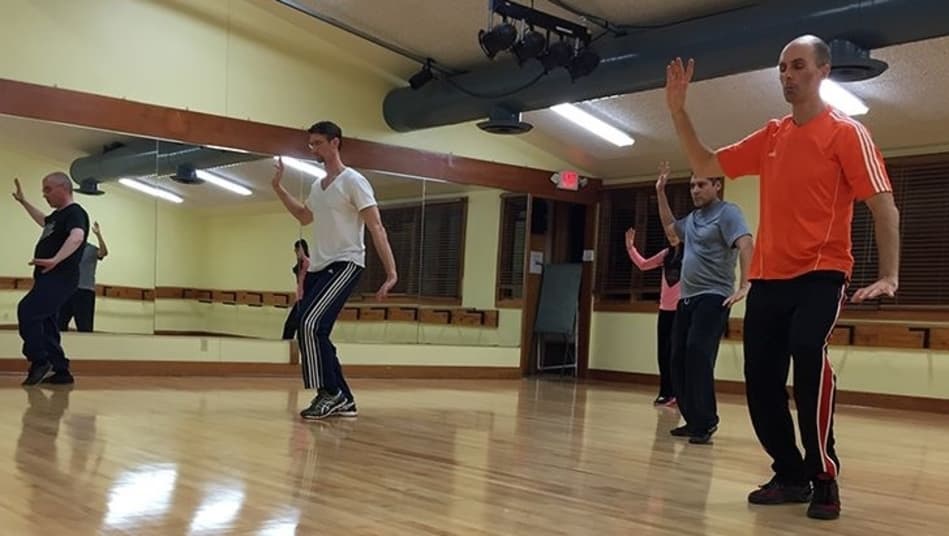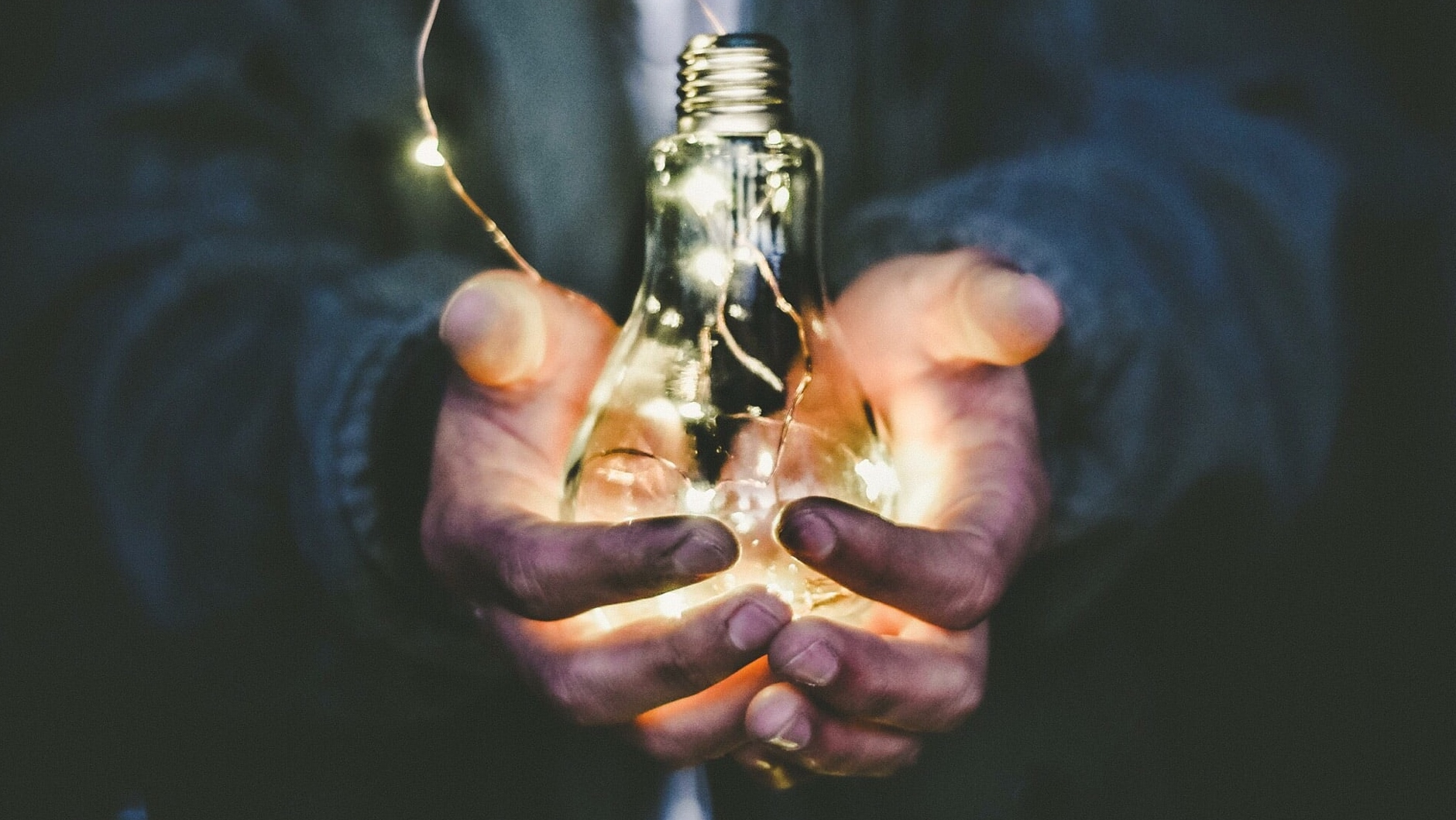If you have been out there on the internet trying to learn about tai chi energy then you have probably waded through your share of images of bodies shooting out huge balls of light. Or maybe practitioners sending a classmate backwards through the air with their palms out. Not to say these images and videos aren’t fascinating and true, but there is a deeper explanation of what tai chi energy is that not only improves our tai chi forms but helps us move the benefits of tai chi out of the classroom and into our life.
Tai chi energy is produced by using posture, breathing, and intention during the tai chi form to develop three energies know as the “Three Treasures:” Jing “Essence,” Qi “Vital Life Force,” and Shen “Spirit.” Jing is produced by concentrating on different aspects of the form, increased Qi travels through the meridian system resulting in health and vibrant energy, and Shen calms the mind resulting in increased wellness and clear thinking.
This starts to sound complicated and esoteric but the truth is that if we understand Jing energy and how to increase it when we do the form, the second two energies build more easily and naturally. This sets the stage for the tai chi energy healing and tai chi energy transfer (internal strength) that many of us are hoping for when we decide to start practicing tai chi.

Understanding the Three Treasures So That Your Life Improves
For many of us “energy” is just, well, energy. Understand that in the East, energy is a multitude of things. Imagine that you thought color was, just, well, color. Then someone showed you a box of crayons and it blew your mind. Suddenly you need new words like red-color and brown-color to describe all the differences.
Energy is the same way. There are words to describe tai chi energy as it is applied with force such “Peng Energy” – Expanding and “Gi Energy” – Pressing. And there are words to describe how your body builds, improves, and expands your energy which we interpret as “being healthy,” “having energy” and “being awake” or basically thinking clearly. The three energies that make this possible are the Three Treasures: Jing, Qi, and Shen.
Jing (精) is most often translated as “essence.” It is the energy that is the basis or beginning of our energy. It is the thing we focus on to get the other energies moving and improved. In this article we are going to focus exclusively on Jing energy because it provides us with the tactical, on-the-ground instructions for how to develop good, clean tai chi energy. But first, we need to put Jing into perspective by looking at the bigger picture and how it relates to its sister energies Qi and Shen.
Qi (氣) is the most popular and well known of all energies. It is translated as “vital force” and is what acupuncturists are trying to make flow and increase. It is what we are full of when we feel great. In meditation, it is what we are concentrating on and trying to circle through or body. Good, clean, flowing Qi = health.
Shen (神) is a bit harder to wrap our mind around because it is often translated as “spirit” but is also used with deity, mind, soul, and supernatural. I like to think of it as what is left when we get rid of all the bad stuff. When we have no worries, when there is no foggy thinking, when we are thinking clearly, when we do not react to the bad behavior of others, that is strong Shen. Think second day of vacation on the beach under a palm tree.
The Three Treasures or sanbao (三寶) are the foundation of Chinese medicine and the basis for the movements and intention of tai chi. The easiest way to think about it is that we have control over Jing to make sure we are calmly breathing deep and paying attention. This allows the Qi to flow and build in our body, which clears our cognitive processes like vapor rising to clear the head of a cold.
Okay! You made it through the esoteric stuff. If you are like me and most of my students, this is very interesting but you want to make a dramatic improvement to both your tai chi form and your life. This is where our knowledge of four types of Jing comes in.

Understanding Tai Chi Energy Both Inside and Outside of Class
Two major definitions are acceptable for Jing energy depending on how you look at it. There is a spiritual connotation that describes an energy that is created from your essence. On the medical side, Jing takes on a biochemical characteristic that is found in all fluids and continues to originate from our center due to DNA. Both definitions allude to Jing being a substance or amount. Decisions we make such as drinking alcohol or too much sex deplete Jing. Exercise, good eating, and qi gong fill it back up and strengthen it.
But there is a bit more to it than having a celestial bucket that you can tap or fill and this is where tai chi comes in. Tai chi energy is strengthened and available simply due to knowing that it exists and choosing to be a student of its instruction. Tai chi expands our Jing energy and gives us a means to understand it and benefit from its implications.
Jing energy is strengthened and available simply due to knowing that it exists and choosing to be a student of its instruction.
Let’s take a look at tai chi energy as it is described in a variety of energy forms and compare it between tai chi push hands and real life. We have included a translation, definition, way to practice it in class, and positive implications for developing Jing. When you do your tai chi form, these are four ways you can increase your attentiveness and what you should be focusing on. This has two purposes: It helps you concentrate during the form so your mind doesn’t wander. It teachers you a valuable skill that makes you a better friend, partner, and employee.
Listening Energy – Ting Jing
Listening energy is a heightened state of attention. The idea of listening is a really close translation because it is the type of focus you use when you are trying to overhear a conversation at the next table. It’s a kind of focus that turns down the other senses. However, this tai chi energy is also physical so it is a little bit more than listening. Think about how you would be “listening” with your foot if you were stepping on ice that might be thin. Kind of the same thing right? In tai chi it is described as a lightness and attention that would allow you to do the form by stepping on upside-down tea cups without breaking them.
| Pushhands | Real Life (work) |
|---|---|
| Intensely focusing on a lightness in your own hands and sensitivity to perceive flexing of muscle, a change in pace, or rounded movement becoming angular. | Ting Jing prevents us from being caught off guard. It involves having a total sensory experience at work by picking up on subtle changes in the office that telegraph disaster. The punctual person begins to be late. The chatty assistant who is quiet before the big meeting. The normally quaffed boss who is disheveled. |
Understanding Energy – Dong Jing
Understanding energy is noticing the direction that a force is moving towards you at the same time you are concentrating or looking out for any increases, decreases, or changes in the intention. Good Dong Jing means that you are not having to recover and are not caught off guard. Bad or no Dong Jing means you are always reacting because you have to stay on the defense. When a person’s energy or intent changes, that gives us the opportunity to make change. If we are not on the look out for this we are always surprised.
| Pushhands | Real Life (work) |
|---|---|
| Understanding which direction a person’s energy is coming from and when they are going to use force. | Rapidly pursuing the source of discontentment rather than being caught up in the emotion that discontentment displays. A boss is furious about the outcome of a report. Non dong-jing people are defending, worried about their job, and reacting emotionally. You are separated emotionally and find the cause. You are in a place to find a solution and bring the team back around to solving issues. |
Neutralizing Energy – Hua Jing
Can I have a favorite tai chi energy? If so, neutralizing energy is it. I think it’s because it is the energy that has taught me the most in life. As a westerner, I am wired to go overboard in a direction. Tired = Double Espresso. Out-of-shape = extreme workouts. Hua Jing teaches to move towards the center and not the opposite extreme of where you are. This way Tired = Do Less or Tired = Nap. Hua Jing allows for a tai chi energy transfer rather than a collision. So in tai chi, rather than confronting an energy straight on with equal or more force we learn to intensely pay attention to the type and angle of the energy to slow it down and redirect it with less force.
| Pushhands | Real Life (work) |
|---|---|
| Not combating a push’s force but rather meeting it and angling it off to a side causing the partner to retreat. | These are the face-saving events where you sense that a colleague is blinded by their own emotion, limiting beliefs, or ambition and you think of an outcome that does not make them wrong but also does not allow her to err. |
Discharge Energy – Fa Jing
Discharging energy is the ability to apply energy due to an alignment of proper body mechanics, relaxation, and focused intent. This is the focus of push hands training and is the internal strength that everyone is after when they are studying the martial aspects of tai chi. Almost any tai chi energy demonstration online is focusing on Fa Jing, sometimes written Fajin.
I want to take some of the mystery out of it here. We develop Fa Jing with the basics; great posture, deep breathing, and soft, open joints. The tai chi energy demonstrations you see are primarily tricks of alignment and leverage which take advantage of another person being out of alignment, ridged, and off balance. We are able to demonstrate discharge energy with a push or punch by remaining soft and quick.
The development of this tai chi energy is a bit more complicated than that because there are reverse breathing techniques and manipulation of Qi to increase the level of power needed to move someone else. But know that if you are early on in your learning, correct posture, breathing, and relaxation are the foundation for Fa Jing. So start there to build the ability to release strong internal energy.
| Pushhands | Real Life (work) |
|---|---|
| Aligning your body and discharging your energy in a push or joint lock. | Sensitivity to a situation where upon, when you choose to act, you have the buy-in (understanding) and support (alignment) prior to “pulling the trigger.” Your efforts are more focused and successful than your peers because you have tied the project to their aims and they are therefore more receptive. |
Improving Your Tai Chi Energy is As Important As Learning the Form
Tai Chi Chuan is designed to deal with tough, quickly evolving situations. Invest in your own future by investing in how you perceive the world around you and understanding the many different hues and colors of the tai chi energies. You could even dive as deep as possible and become a medical qigong practitioner. Practitioners at every level are benefiting from deepening their knowledge of the internal side of tai chi: Finding, Building, Using, and Understanding Chi Energy.


